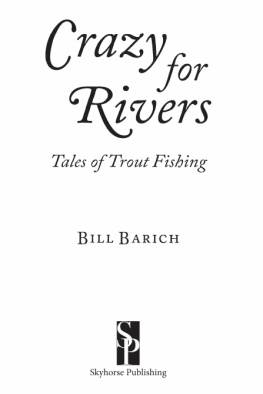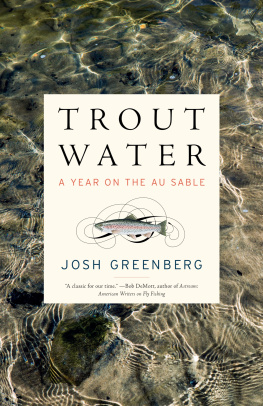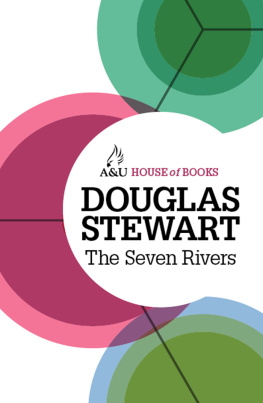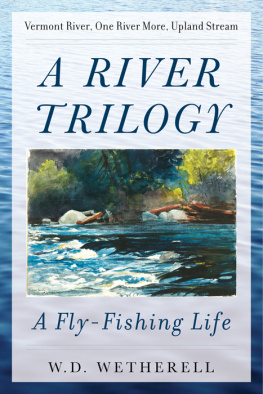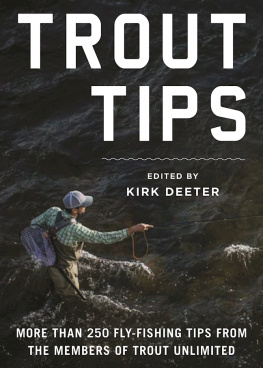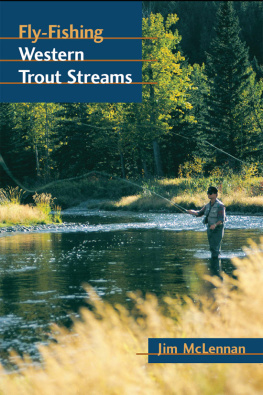Acknowledgments
At some level, all books are essentially collaborations. Much as a writer may call the work his own, other people have inevitably, and fortunately, been involved. I am grateful for the opportunity to acknowledge their contributions; one lives to incur such debts.
First, thanks to Nick Lyons, who, for reasons that will forever remain mysterious, had confidence in this project before a word of it was ever on paper, and during its completion, performed the various offices of editor, advisor, critic, midwife, and friend.
Thanks as well to Dave Hughes, who first encouraged, then urged me to write this book.
I am grateful to the friends, family, and fishing companions who have, in many ways, helped bring this book about. My thanks to Jean Archer, J. T. and Polly Campbell, Chris Camuto, Rich Daniels, Adelheid Fischer, Clark Harrison, George Hopper, Darrel Martin, Brian McGinley, Lisa Norris, Bill Potts, Bill and Andrea Rowland, Jim Schollmeyer, and particularly to Larry Stauffer, for his insatiable desire to explore.
And a special thanks to Lizard, who goes way back to the beginning.
Some debts are so vast and pervasive that they can scarcely be assessed, let alone repaid. Next to them, the word thanks seems absurdly small. I am deeply grateful to my wife, Betty Campbell, and my brother, Greg Leesonforemost among fishing companions, my wisest teachers, and most beloved of friends, without whom, there is nothing.
Lastly, to Ted, Danny, and Meg, the small school of nephews and nieces who dart everywhere around the edges of this book, happily oblivious to it all, but a constant reminder that the past is not always gone and the future not always a secret.
1
A Moveable Feast
The Ancient of Days forever is young,
Forever the scheme of Nature thrives;
I know a wind in purpose strong
It spins against the way it drives.
Herman Melville, The Conflict of Convictions
Above a ragged treeline, the thin curl of a waning moon lingers in the blue-black sky of five A.M. Tomorrow, the last sliver of light will vanish altogether, resetting the clock to some paradoxical beginninga new moon (although theres nothing to see) and spring tides (on this, the first day of November). On the Pacific coast, gravity is a very serious business. The coupled forces of sun and moon breed exaggerated rhythms in the new tides. The ebb falls unusually low, baring the clam flats and shrinking the bay back to the broad canal of the riverbed. The flood runs hard and high, bearing schools of salmon that wiggle upriver in spermatozoic surges deep into the coastal mountains where they sow their own particular version of life. Its a pretty odd arrangement, even for nature.
Six miles above the head of tide, I drive slowly along the dark highway and look out the open window. A worn bearing in the trailer clicks like a casino wheel as I search for an opening in the roadside brush that marks the boat slide. The entrance is nearly overgrown, unused for almost half a year. On the third try, I at last square up the trailer to a shaggy opening in the undergrowth. The slide is an ad hoc, one-way trail to the river, down which a boat can, theoretically, be slipped into the water. It is substantially less graceful than the name implies. This one runs thirty rocky yards down a 20 percent grade, ending in a four-foot vertical drop, and cross-hatched along its length with thick whips of Himalaya vine and hard-tipped thorns. Theres no mystery to the launch, which works just like it looksyou shove the boat stern-first down the slide and, grabbing hold of the bow rope, you ski down behind it over dirt and gravel, attempting in some puny way to influence the rate of descent. Once set in motion, the business takes on a life of its own with several conceivable outcomes, only one of which is good. This morning, it goes according to plan, and I skid almost to a standstill just as sixteen feet of McKenzie River driftboat teeters over the fulcrum of the bank and bounces lightly on the cushion of the river. I push off with an oar, and the boat chatters across a last submerged rock, into a weightless drift.
Ahead lies an apparently simple geometrythe salmon migrate upriver, the fisherman down, and somewhere along this thin ribbon of water, the opposing vectors converge. Its astonishing, though, how much more complicated the matter can become.
The salmon run is a moveable feast, predictably annual but with no better sense of timing than any other birth. Neither an exact point nor a specific interval, it is at best a distribution of statistical likelihoods around the nucleus of autumn. If the rains come, salmonsilvers and chinookmay enter the bay as early as August; if not, October may come and go without appreciable numbers of fish in the river. The last four years have been dry like this, and the movements of the salmon have become more indeterminate still. You can rely, really, only on two certainties: starting point and direction. From there, you either take up a vantage point and wait for the run to come to you, which is more reliable, or you try to hit a moving target, which is decidedly more interesting.
Despite appearances to the contrary, nature rarely operates in smooth continuities; or rather, it does so only in aggregate, over the long haul. In finer structuresfrom atomic quanta, to the convulsions of birth, to exploding starsthe universe changes in local abruptnesses punctuated by the dormancies of anticipation and aftermath. The salmon run is not a steady stream, but a succession of irregular spasms, and the fish congregate only intermittently through the river, in those certain places that offer temporary respite and a staging ground. Out in the bay, the salmon hold in deep holes and channels, where they are sought out in one of anglings more dismal spectacles.
Every autumn up and down the coast, hundreds and hundreds of boats, from tiny prams to sportfishers, work the estuary from daybreak to dusk, trolling when the tide runs, anchoring on the slack to cast or stillfish. They pack themselves together in frenetic and appalling densities that beggar specific description but generally resemble the other venues of psychotic consumerism here in the Disney empire. Most of the boats carry sonar gear, partly to read the depth and contour of the bottom, but mostly to find fish. A salmon passing beneath the vigilant eye of a transducer registers as a blip on a video screen that, just to be safe, emits an alltoo-audible, exclamatory ping! When a school of salmon passes beneath the boats, the whole fleet pipes a calliope of digitized beeps that provides exactly the kind of circus-like ambiance that the whole scene so richly warrants.
I dont object to their methods, all the hardware and bait, but to their approach. The boaters watch screens rather than water and fish for LCD blips instead of salmon, oblivious to the noise, the diesel fumes, and the fantastic congestion of two-cycle outboards coughing blue smoke under the burden of too many baseball hats and Budweisers. And rippling beneath the skin of it all, like nitrogen in the blood, the distinct tingling hysteria of avarice. Even conscientious catch-and-release fishermen, if theyre honest, will admit the difficulty of handling a big fish without a momentary, impulsive desire to possess it. Meat fishermen indulge this as a principle of being.


